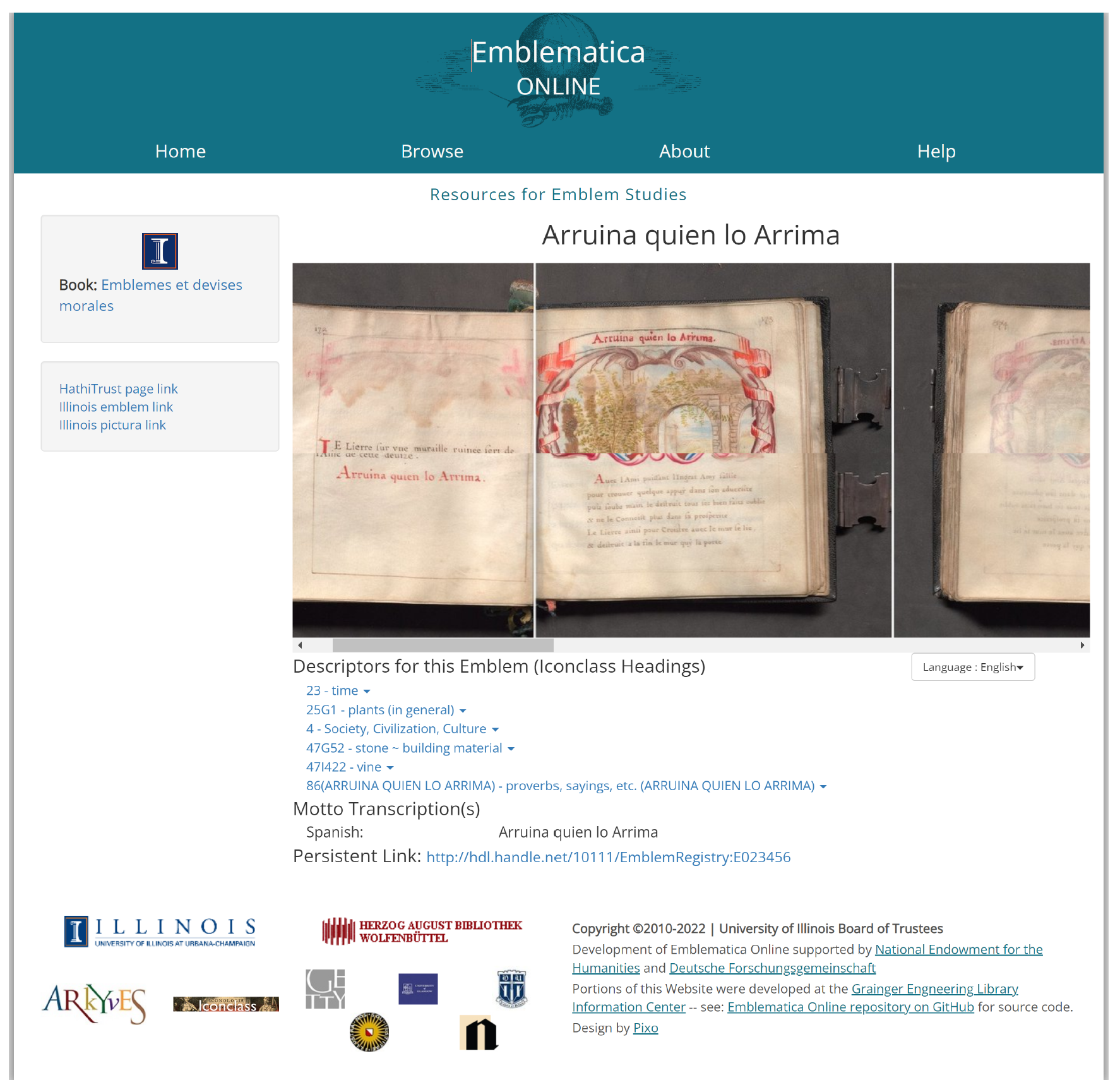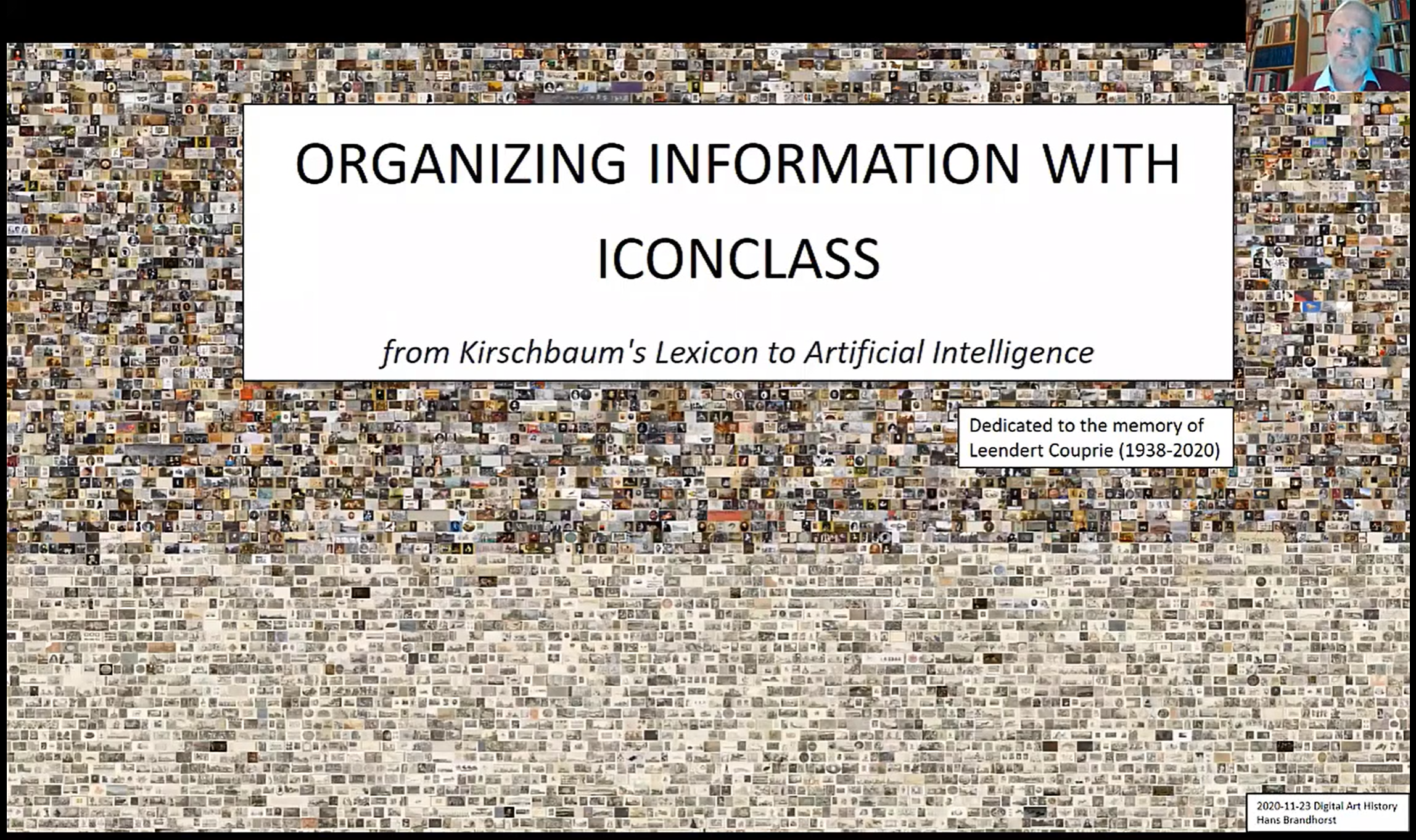2.1 KO in digital humanities
2.1.2 ICONCLASS
Having learned that it's crucial to identify the relevant concepts in an information resource, let's look at examples of KOS that help us to represent these concepts in a controlled vocabulary. Let's start with a classification: the Iconclass.
Iconclass is a classification system for the subject classification of works of art. Its origins go back to the 1940s, resulting from the reflections of Henri van de Waal (writer, art historian, and professor of Art History at Leiden University). The first edition was part of the Decimal Index of Art of the Low Countries, published in 1968, and has been revised and updated to the present day. The digital version began in the 1990s, still on CD-ROM, and the current web version dates from 2006, having been revised and improved in several functionalities. It is currently used in museums, libraries, and digital humanities research projects to describe and retrieve subjects represented in images (see information on systems using ICONCLASS for subject access, available at: https://iconclass.org/help/aboutc).
The Iconclass structure consists of 10 main classes, which are further subdivided into more specific ones. It is a simple, hierarchical, and decimal structure that allows the creation of subject access points across a wide range of concepts. An Iconclass term consists of an alphanumeric class number ("notation") and a corresponding content definition. An object can be indexed with as many class numbers as necessary for a complete representation of the concepts. This classification covers a wide range of subjects, from abstract, non-objective art to classical mythology and ancient history.
Iconclass is available in six languages: English, German, French, Italian, Portuguese, and Japanese. It's currently being translated into Dutch, Finnish, and Chinese (more information about this work is available at https://iconclass.org/help/translations). It's possible to browse the hierarchical tree or search for words in the classification, which will take you to all the possible notations. Free registration is required to have full access to all the platform functionalities. Once registered, viewing the images associated with the notations as examples is possible.
The following image shows an example of notation. A resource about Cinderella (as a fairy tale) would be represented by class 84(CINDERELLA). Browsing the hierarchical structure on the left, you can find the term (1) and the associated notation and description (2). To see the associated image as an example, you need to log in (3).
Image 1
(Source: Iconclass. Available at https://iconclass.org/84(CINDERELLA))
Image 2 shows an example of the use of Iconclass in the subject indexing of emblems. Indexing emblems is a complex task because emblems are not isolated historical phenomena (Brandhorst, 2004). Using a system such as Iconclass allows the desired uniformity in subject indexing. The "Emblematica Online" portal provides search and access to 1,388 free facsimiles of rare emblem books from various libraries. It is hosted by the University of Illinois at Urbana-Champaign, and its founding partner is the Herzog August Bibliothek, Wolfenbüttel.
Image 2

(Source: Emblematica Online. Available at http://emblematica.grainger.illinois.edu)
The video is a 58:40 minute recording entitled "Organizing Information with Iconclass. From Kirschbaum's Lexicon to Artificial Intelligence", an online lecture of the Series Digitale Kunstgeschichte, München 2020. The recording is available via LMU cast.
When opening the video by clicking on the image, you will find the following topics: Is Iconclass still relevant after 60 years? (from 00:15), updating a classic lexicon (01:23), repairing offensive words (14:20), accelerating subject access (23:44), and why the use of Iconclass can make artificial intelligence smarter (48:33).
The full text of the lecture is available here.
Click on the image to open the video:

(Source: Ludwig-Maximilians-Universität München. Available at https://cast.itunes.uni-muenchen.de/clips/qMU7vXNhH6/vod/online.html)
REFERENCES
- Brandhorst, J.P.J. (2004). Using Iconclass for the Iconographic Indexing of Emblems. DigiCULT Publications. Available at: https://iconclass.org/read/2004_Digicult_Emblems.pdf

